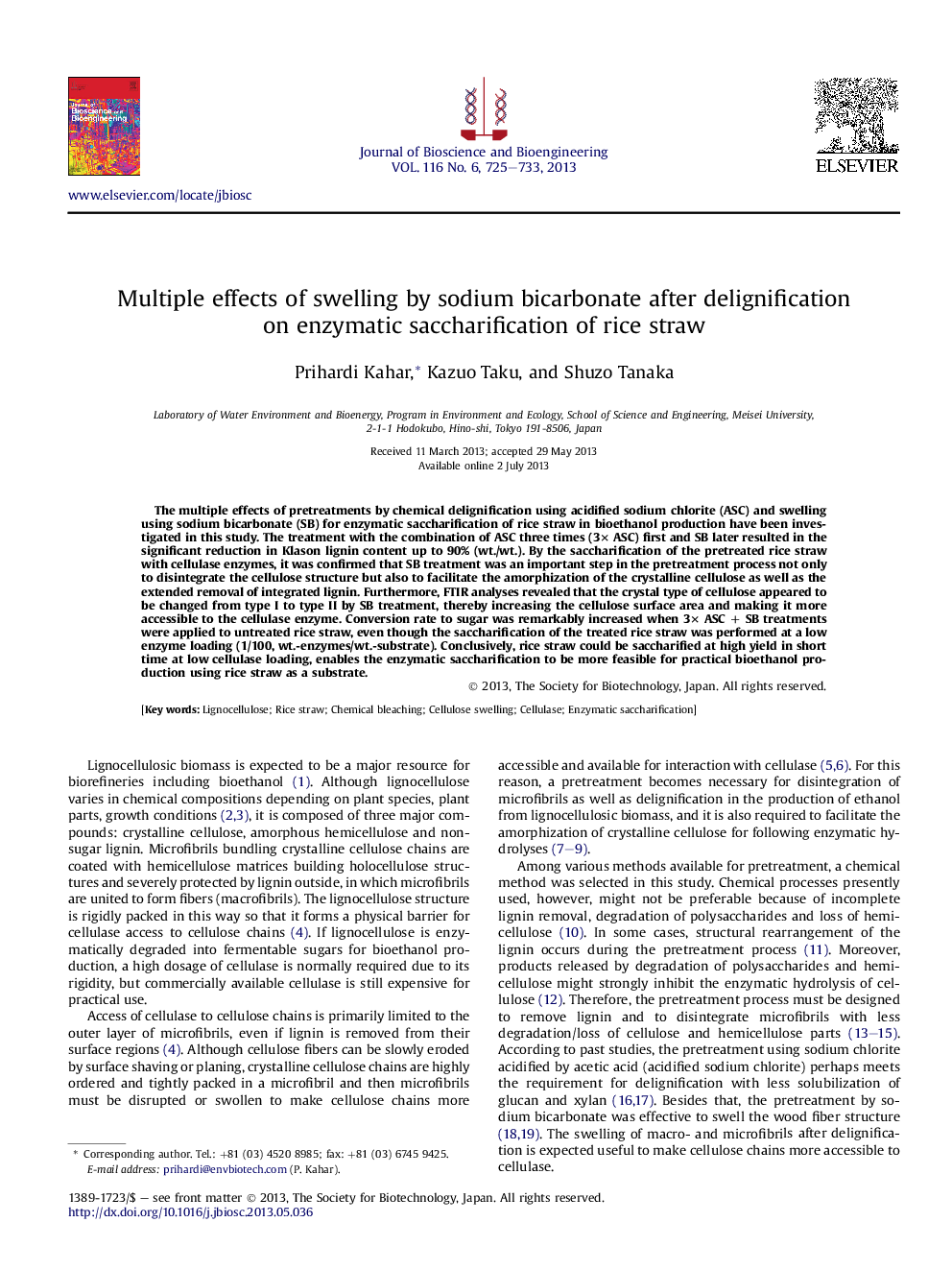| Article ID | Journal | Published Year | Pages | File Type |
|---|---|---|---|---|
| 20708 | Journal of Bioscience and Bioengineering | 2013 | 9 Pages |
The multiple effects of pretreatments by chemical delignification using acidified sodium chlorite (ASC) and swelling using sodium bicarbonate (SB) for enzymatic saccharification of rice straw in bioethanol production have been investigated in this study. The treatment with the combination of ASC three times (3× ASC) first and SB later resulted in the significant reduction in Klason lignin content up to 90% (wt./wt.). By the saccharification of the pretreated rice straw with cellulase enzymes, it was confirmed that SB treatment was an important step in the pretreatment process not only to disintegrate the cellulose structure but also to facilitate the amorphization of the crystalline cellulose as well as the extended removal of integrated lignin. Furthermore, FTIR analyses revealed that the crystal type of cellulose appeared to be changed from type I to type II by SB treatment, thereby increasing the cellulose surface area and making it more accessible to the cellulase enzyme. Conversion rate to sugar was remarkably increased when 3× ASC + SB treatments were applied to untreated rice straw, even though the saccharification of the treated rice straw was performed at a low enzyme loading (1/100, wt.-enzymes/wt.-substrate). Conclusively, rice straw could be saccharified at high yield in short time at low cellulase loading, enables the enzymatic saccharification to be more feasible for practical bioethanol production using rice straw as a substrate.
